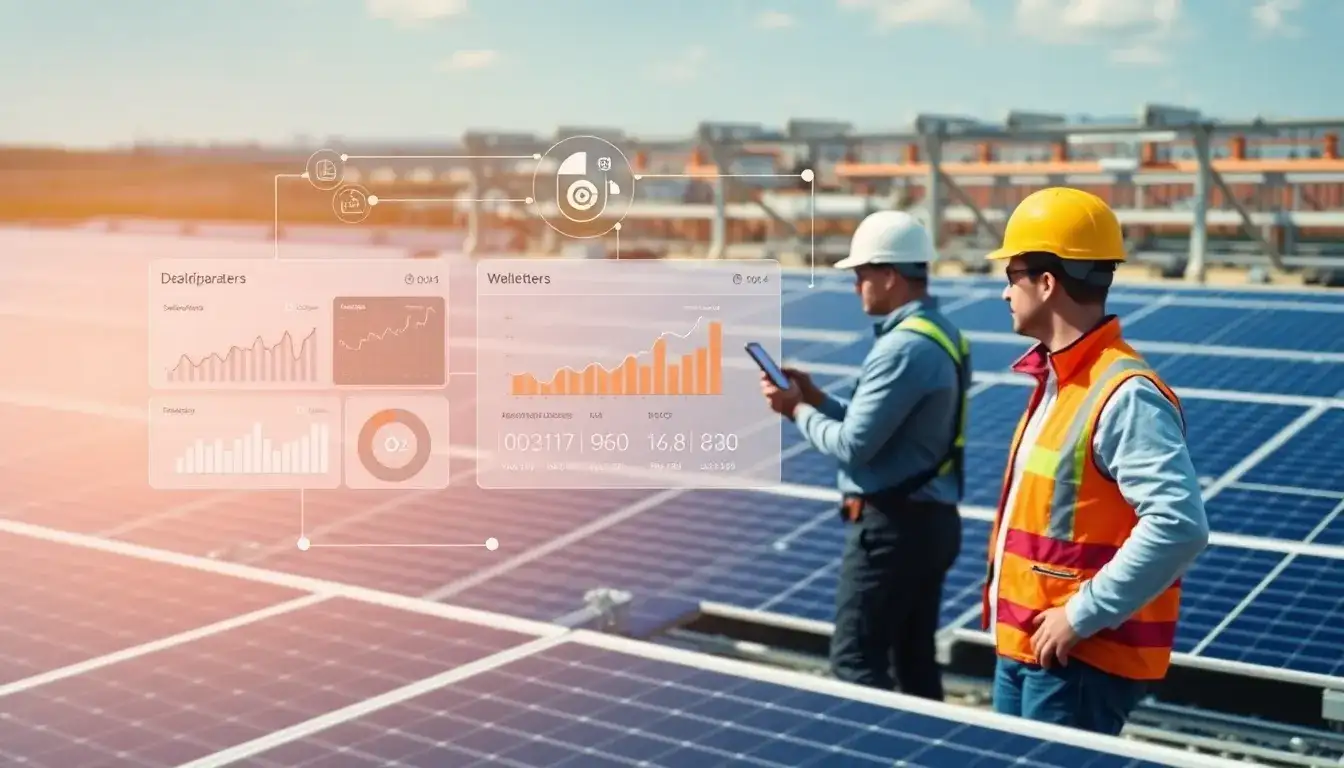
Application of Intelligent Operation and Maintenance System Architecture in Photovoltaic Power Plants
The intelligent operation and maintenance (O&M) of photovoltaic power plants involves utilizing various technological methods, such as the Internet of Things (IoT), big data, and artificial intelligence (AI), to achieve real-time monitoring, data analysis, and predictive maintenance of the plants. This approach aims to automate and enhance the management of power stations, ultimately improving operational efficiency and generating benefits.
To realize this objective, a systematic plan and technological support are essential. The intelligent O&M of photovoltaic power plants is built on a collaborative architecture known as “edge-cloud” integration, which deeply merges IoT, AI, and big data analysis technologies. This creates a complete chain of “data perception – analysis decision-making – closed-loop control,” facilitating a transition from reactive repairs to proactive prevention. The core value of this approach lies in data-driven decision-making.
The data perception layer operates by deploying temperature and humidity sensors, along with current and voltage monitoring modules, on key equipment such as photovoltaic modules, inverters, and combiner boxes to collect operational parameters in real time. The analysis decision-making layer employs cloud computing and big data analysis technologies to clean and mine vast amounts of data, establishing equipment health models and using machine learning algorithms to train fault prediction models that identify potential fault patterns.
The closed-loop control layer consists of an automated control system that dynamically adjusts the angle of photovoltaic panels and cleaning schedules based on the analysis results. When a fault occurs, the system automatically generates a work order and pushes a treatment plan, thereby achieving a “monitoring – warning – response” closed loop.
Key technological components include IoT technology, which standardizes device data access through inter-device connectivity protocols such as Modbus RTU and OPC UA. Additionally, edge computing is utilized by deploying edge servers that enable local data preprocessing and real-time decision-making. Big data analysis supports historical data analysis and pattern mining by storing heterogeneous data sources, while also constructing features like “irradiance-cleanliness coefficient” to enhance model prediction accuracy.
AI algorithms analyze the degradation trends of equipment through various root algorithms to predict faults. Furthermore, image recognition technology is applied via drone inspections to identify issues like shading and hot spots on photovoltaic panels. Smart inspections are facilitated by drones equipped with infrared imaging devices, regularly scanning for abnormal temperatures and cracks in components. A visualization platform displays real-time data on power generation and equipment health, enabling quick fault location on electronic maps and supporting predictive maintenance and optimization.
This article is written by the editorial team at Shaanxi Public Intelligent Technology Co., Ltd.







